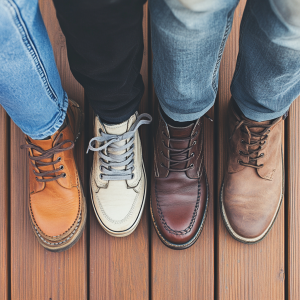
Only 6 primary manufacturers of shoes in the U.S.
2.4 BILLION of these are purchased every year. They are a critical part of our society, not likely to disappear even in the midst of the most gruesome of disasters. In fact, the more serious the disaster, the more needed these items will be.
99% of them are made in China.
More than 90% of ALL of the materials needed by the handful of U.S. manufacturers come from overseas.
The number of qualified U.S.-based repairmen to make these is a dying breed and requires weeks of advance notice and airline and hotel expenses on top of the work, thus bringing a manufacturer to a costly halt in the meantime. The manufacturing or the repair parts and machines needed to produce this product are nearly as difficult to come by.
There are less than 6 main manufacturers in the U.S.—clearly representing an insufficient amount of resources to fulfill the needs of hundreds of millions. The less than 900 footwear manufacturers use these main ones.
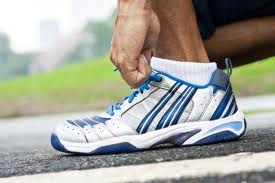 What are “these” widely purchased items? Shoes. And why should you care whether or not you can get them here in America? Is it because the average woman owns 19 pairs of shoes today and if she can’t have her shoes she just might go crazy? Hmmm…perhaps, but that’s a topic we’ll address when we’re talking about hormonal imbalances. *grin* The reason you should care about “da feet” is because, you’re a prepper, and you KNOW that shoes can make the difference between survival and death in extremely tough times. Whether it’s snow boots, athletic shoes, or specialty work boots, proper covering and protection for your feet are critical even in today’s world, in any kind of temperatures. But the problem is, there’s a very real and often understated vulnerability that threatens all of us in a very painful way should there ever be a crisis which resulted in a loss of access to the hundreds of millions of shoes that are imported to the U.S. ever year!
What are “these” widely purchased items? Shoes. And why should you care whether or not you can get them here in America? Is it because the average woman owns 19 pairs of shoes today and if she can’t have her shoes she just might go crazy? Hmmm…perhaps, but that’s a topic we’ll address when we’re talking about hormonal imbalances. *grin* The reason you should care about “da feet” is because, you’re a prepper, and you KNOW that shoes can make the difference between survival and death in extremely tough times. Whether it’s snow boots, athletic shoes, or specialty work boots, proper covering and protection for your feet are critical even in today’s world, in any kind of temperatures. But the problem is, there’s a very real and often understated vulnerability that threatens all of us in a very painful way should there ever be a crisis which resulted in a loss of access to the hundreds of millions of shoes that are imported to the U.S. ever year!
What would you do if there were a massive power outage nationwide, or an earthquake in the New Madrid area, or a complete collapse of the value of the dollar—how would you obtain comfortable, functional, and protective footwear? What about your kids who seem to grow out of shoes 3 times a year?!! “Just go barefoot”, you say? Yeah, think again. Even the Cody Lundin characters of the world can’t get away with traipsing 10 to 15 miles everyday in freezing temperatures and yet it’s quite possible you could find yourself presented with such a scenario.
The key thing to understand here is that shoes won’t be available on every street corner like they are now. Most people don’t appreciate  that the U.S. doesn’t really make shoes any longer. There is only ONE primary athletic shoe manufacturer in the U.S. (with over 350 million athletic shoes being sold in America each year). The heavy duty hiking boots, work boots, and other necessary “roughing it” kind of footwear comes from overseas primarily. So if there ever were a crisis that interrupted or even an export ban on them, we’d be in a world of hurt—literally. Even if we scaled WAY back and only thought about providing ONE pair of shoes for each “survivor” of the crisis, we’d still be in a world of hurt. The average time it takes an experienced cobbler to make a shoe from raw materials is about 1 day. Yeah, I don’t think I’d want to be on THAT waiting list, do you? And besides, do you even have a cobbler in your community now? Even with today’s technology applied to education it takes about 4 years to learn the skills of a cobbler. Can you imagine having to walk 10 miles everyday in your “everyday” shoes? Even if you DID purchase a great quality of shoes, how in the world would you be able to know how long they’d last? How many of us could leisurely shop all day in a presumably comfortable pair of shoes without griping about our “aching feet” at the end of the day? The fact is, very few shoes nowadays are MADE to withstand much more than aesthetic use. Even under the BEST of circumstances that would include no interruption of supplies, raw materials, expertise, and the application of technology, the handful of shoemakers presently available in the U.S. are woefully insufficient to meet the needs of the citizenry who need shoes. Yup, quite a predicament we’ve got here. This is why I take the matter of shoes very seriously!
that the U.S. doesn’t really make shoes any longer. There is only ONE primary athletic shoe manufacturer in the U.S. (with over 350 million athletic shoes being sold in America each year). The heavy duty hiking boots, work boots, and other necessary “roughing it” kind of footwear comes from overseas primarily. So if there ever were a crisis that interrupted or even an export ban on them, we’d be in a world of hurt—literally. Even if we scaled WAY back and only thought about providing ONE pair of shoes for each “survivor” of the crisis, we’d still be in a world of hurt. The average time it takes an experienced cobbler to make a shoe from raw materials is about 1 day. Yeah, I don’t think I’d want to be on THAT waiting list, do you? And besides, do you even have a cobbler in your community now? Even with today’s technology applied to education it takes about 4 years to learn the skills of a cobbler. Can you imagine having to walk 10 miles everyday in your “everyday” shoes? Even if you DID purchase a great quality of shoes, how in the world would you be able to know how long they’d last? How many of us could leisurely shop all day in a presumably comfortable pair of shoes without griping about our “aching feet” at the end of the day? The fact is, very few shoes nowadays are MADE to withstand much more than aesthetic use. Even under the BEST of circumstances that would include no interruption of supplies, raw materials, expertise, and the application of technology, the handful of shoemakers presently available in the U.S. are woefully insufficient to meet the needs of the citizenry who need shoes. Yup, quite a predicament we’ve got here. This is why I take the matter of shoes very seriously!
To properly prepare for such a contingency, I believe it’s important to invest in quality shoes that will take a beating and that are proven to be comfortable for long hours of walking or running. At the very least, be sure to have a SPARE pair of walking/hiking shoes that completely cover your feet in your go-bag. I keep a spare pair of athletic shoes in my car.. (In fact, I even keep a pair of paw coverings for the 2 dogs because they are frankly too pampered and have never had to walk more than a mile in “the elements”.) When it comes to kids, I’d be certain to have at least 2 years’ worth of sizes for each one. That may seem stiff, but you can at least start your efforts at the local thrift store. I actually have found that preparing ahead for shoes for kids actually helps SAVE money. You KNOW your kids are going to grow out of their shoes. So if you by them good shoes NOW for the next couple of years, then you get to purchase them at TODAY’s prices instead of when inflation has had a chance to hit ‘em.
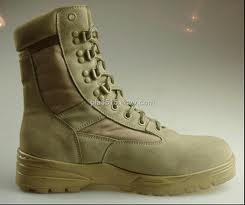 When considering your “preparedness footwear be sure you’re taking into consideration quality arch support and ankle support as well. Not knowing when you’ll ever be able to get a new pair of shoes again is NOT the time to skimp on these details. I’m personally fond of the tactical boots that the law enforcement industry wears or the military boots. The latter can often be found at the army surplus stores still in quality condition. Also be sure that you focus on quality socks that you stock up on that don’t shred to bits after a few weeks of wear. (Again, you’re saving money getting them now instead of later and you KNOW that you’ll need them later). Along those same lines, I’d strongly suggest you invest in socks for severe winter conditions that will keep your feet dry. (You’ll want to use layers of protection in extreme weather rather than just one layer of a really thick sock.)
When considering your “preparedness footwear be sure you’re taking into consideration quality arch support and ankle support as well. Not knowing when you’ll ever be able to get a new pair of shoes again is NOT the time to skimp on these details. I’m personally fond of the tactical boots that the law enforcement industry wears or the military boots. The latter can often be found at the army surplus stores still in quality condition. Also be sure that you focus on quality socks that you stock up on that don’t shred to bits after a few weeks of wear. (Again, you’re saving money getting them now instead of later and you KNOW that you’ll need them later). Along those same lines, I’d strongly suggest you invest in socks for severe winter conditions that will keep your feet dry. (You’ll want to use layers of protection in extreme weather rather than just one layer of a really thick sock.)
To find out what kind of shoes may be necessary to support your entire body in a crisis I’d suggest doing a little searching to find out what postmen wear or chefs or servers or marathon runners or even those missionaries from the Church of Jesus Christo of Latter-Day Saints. (Those guys tract miles on their feet everyday in all kinds of areas of the world. Rockport shoes have long been their go-to brand specifically for the ability to withstand the abuse such distance will handle. Typically one pair of shoes will barely eek out a years’ worth of support for these ambitious walkers.) Regardless of what the quality shoes may cost you now, it will most certainly be less costly than what you would have to pay in an environment in which there are NO MORE shoes being made in the foreseen future. Even with others perishing and thus no longer having a need for shoes on the Other Side, I still wouldn’t trust that my shoe needs will be met by those who weren’t capable of preparing to survive a crisis in the first place, would you?
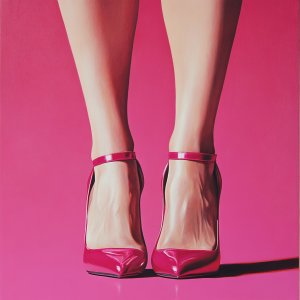
Always carry a back up pair of shoes
This article would be incomplete if I didn’t also address being sure to stock up on the other items necessary to properly protect and care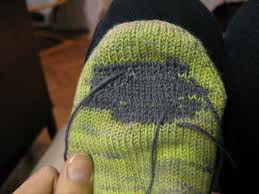 for the feet. Athlete’s Foot Powder, moleskin, ace bandages, pain relievers, nail clippers, band-aids, and even Dr. Scholls foot pads would be wise investments. Those handy-dandy foot warmer inserts might come in handy too. The good news is that if you’ve embraced couponing, I have no doubt that you can obtain plenty of these items FREE or cheap, so no excuse there. I would also suggest that you do a little search on YouTube and learn how to darn socks—no, not curse at them, mend them, and make sure you have the proper supplies to do so. And hey, if you have the chance to enroll in a cobbler class at your local community college, you may want to consider it. You’d be the King of the Hill in just about any community striving to succeed in the aftermath of a disaster.
for the feet. Athlete’s Foot Powder, moleskin, ace bandages, pain relievers, nail clippers, band-aids, and even Dr. Scholls foot pads would be wise investments. Those handy-dandy foot warmer inserts might come in handy too. The good news is that if you’ve embraced couponing, I have no doubt that you can obtain plenty of these items FREE or cheap, so no excuse there. I would also suggest that you do a little search on YouTube and learn how to darn socks—no, not curse at them, mend them, and make sure you have the proper supplies to do so. And hey, if you have the chance to enroll in a cobbler class at your local community college, you may want to consider it. You’d be the King of the Hill in just about any community striving to succeed in the aftermath of a disaster.
As a reminder, the Principle of Clothing/Shelter Preparedness holds the priority position of #5 among the 10 Principles of Preparedness making this aspect of preparedness one that may be more important to you than even water and food needs.
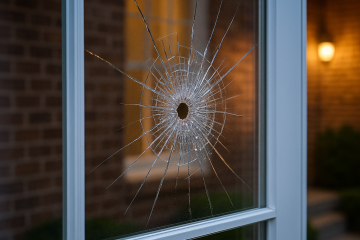
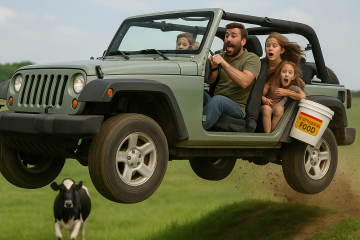
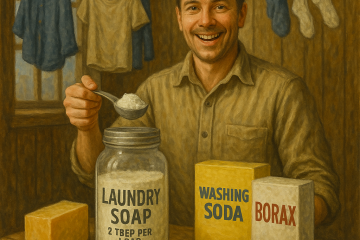
22 Comments
kathy hodges · January 22, 2013 at 10:01 am
Which shoe is made in th US? You mentioned there is only one but didnt tell the manufacturer. Interesting article, Thank You.
sclindah · January 22, 2013 at 1:49 pm
That’s one thing we have made sure to have on hand is a couple of extra pair of tennis shoes. I also learned to darn socks by using an old light bulb that you put the sock over. I hadn’t thought that we don’t use those light bulbs any more! I guess a tennis ball would suffice to keep them where you could mend them! Thanks for the article. It’s those little things we use every day that we have to think about to have on hand.
drwoof · January 23, 2013 at 1:51 am
My mom used gourds to stretch the sock on. May come in handy when the light bulbs as we know them are all gone.
Beth · January 22, 2013 at 5:05 pm
So very, very true. I’ve been stocking up on shoes. I’ve over 50 pairs. Lots of boots, lots of sneakers. Thank you for making such a good point.
Kellene Bishop · January 22, 2013 at 7:38 pm
I said there is only one athletic shoe manufacturer; that’s New Balance.
kahne · January 22, 2013 at 7:47 pm
Renewed effort to get more footwear indeed at top of my list, Thank you Kellene.
Mrs Tina · January 22, 2013 at 8:18 pm
I agree that footwear is something we need to be better prepared for. My family takes lots of hikes each year. Usually averaging about 5 miles, sometimes during these hikes we are climbing through canyons and/or going up and down inclines. Sometimes crossing through streams. Downhill is especially hard on your toes when you do not have proper foot wear, even with excellent hiking boots when your tired the toes get pushed forward and get very sore on the downhills. We have a four year old and while he can hike about 2 to 3 miles depending on the difficulty of the trail he spends the other protion of the hike in a kid back pack. If you have young children a kid back pack is a very good investment, not only for spending quality family time outdoors getting excersise but in a worst case senerio you will need to figure out a way to carry these precious souls and carrying them in your arms is simply not a good option. I always try to remember some shoe inserts on our hikes that way when my feet do start to hurt I can add them mid hike and get a lot of relief. The reason I don’t use the insoles the whole hike is because once certian pressure points get sore adding the inserts changes the pressure points. If I wear the insoles the whole time once the pressure points get sore they stay sore for some reason. Even if I remove the inserts to try to change the pressure points it does not help as much and my feet do not get as much relief. Of course this is something that could vary from person to person as well as shoe to shoe. Best advice is to follow Prepardness Pro’s advice on practice. Take hikes, practice with your shoes and which methods help bring relief to your precious mode of transportation. We hiked the 5 mile round trip hike up Mt Timp, all up and down steep grades. My most valuable lesson learned was to place my downhill steps carefully so I put more pressure on the heel area of my foot as opposed to my regular gate which was putting more pressure on my toes. My toes became quite sore because my shoes did not fit as well as I thought they did.
Mrs Tina · January 22, 2013 at 8:26 pm
Sorry to make so many comments, I just thought of one other important factor to consider in regards to the type of shoes you want to purchase. It does depend on the climate you live in. On one hike we found ourselfs on a trail that was seldom used. A whole field of foxtails had taken over the area. We were on a hike that was a loop and it would have been a lot longer to back track with out children who were becoming tired that to push forward. So forward we did go with our hiking tennis shoes. We tried to be very carefull to avoid the stickers but in the end we all ended up with MANY stickers in our socks and these stickers felt horrible scratching and irritating our ankles. High boots would have been a much better option for this hike. Also if you happen to be in an area where you may come accross snakes or scorpions high leather boots will offer a lot more protection than tennis shoes and socks.
jl · January 22, 2013 at 11:00 pm
I buy socks and shoes on sale. I have held onto some of my older sons shoes for my younger one. But anyone who has a boy knows how hard they are on shoes. I will buy bigger sizes if they are on clearance. My high heels won’t be of much use if there is a major disaster. So I have boots and extra tennis shoes.
Suzie Q · January 23, 2013 at 2:50 am
If things get that bad, where no one could get shoes because we are suddenly isolated from the rest of the world, then our whole society will change to one that will resemble the 1800’s real quick. Because I am a colonial era re-enactor, I learned over the last 21 years how to make my own moccasins – Eastern Native American center-seams. Easy to make and I even made my own pattern. You have to make them from thick enough leather to wear well. I know two makers of various styles of moccasins that you can order made for your feet by drawing around your foot and sending in the pattern and they will make them for you – a 3 month wait, though. Poppins Moccasins and Dyers Moccasins. And they make them with double soles. If you make your own, use elk or moose, and as a last resort – cow (cow is hard to work with and not soft). Elk and moose are the best. If you have any re-enactments coming to your area, leather suppliers are usually there selling tanned leather of all types. Or, you can make a trip twice a year to the National Muzzleloading Shoot (in June and September) at Friendship, Indiana and the whole town turns into a giant flea market, and frontier village, as well as national competition shooting at the range. Leather sellers galore there.
Just a thought because I started out with buying a moccasin kit (bought at Friendship) already cut out, my size shoe, and ready to sew). Then I made my own pattern later (out of newspaper) and made another pair for two friends of mine). Hey, anything on your feet is better than nothing and you can line them with felt, or sheepskin or just wear heavy wool socks – moccasins stretch as you wear them and you just keep them oiled (with a good leather oil, like bear grease (yes, they make it in a tin) or mink oil, to keep them water proof and soft.
Bill · January 23, 2013 at 4:40 am
Does anyone know of a good brand of boots that can be re-soled easily? My feet turn under (condition called underpronation) which causes the outer edge of the heel to wear out first. I want to invest in good quality boots, but I also need some that it is possible to repair.
Kellene Bishop · January 23, 2013 at 5:24 am
Bill, the readers on our Facebook page are lauding Red Wing Boots as being a superior, American made, boot.
jacqui · January 23, 2013 at 9:09 am
Thanks for the timely advice – I’ve thought about it but not put it into practice but will do now. One of the silliest shoe stories i’ve heard follows. During a trip to Italy my son and daughter climbed Vesuvius. One of the other climbers was a woman wearing high heels. Imagine going down a scoria slope with those on
Laura Bradley · January 23, 2013 at 2:54 pm
To Bill: to prevent the pronation you are talking about use a a heel support insert on the side of the heel that pronates outward (put it on the side that wears out fast). That will cause you not to pronate.
Also, to all, be sure to check out ebay…I just scored a brand new pair of Bates Tactical Boots (zipper on the side) for less than $40 including shipping. Another thing to remember too is to get a half size LARGER than your everyday shoes to accomodate the thicker socks, nothing worse than pinching! and wearing thin socks in boots leaves you open to blisters. BTW Bates is made in America and are very popular amongst law enforcement that I know.
Lastly, once you buy the boots…WEAR THEM!!! they will be stiff and if you are not used to wearing boots that come up over your ankle they will feel strange. I like to wear them around the yard.
Coyote · January 23, 2013 at 3:52 pm
These are made in Wisconsin! I know how well they wear, super well made.
http://workingperson.com/brands/thorogood-boots.html
jim · January 23, 2013 at 4:42 pm
Good article, and something that I thought of years ago. I don’t throw away my old shoes – I buy new shoes BEFORE my current shoes bite the dust, so to speak. My old shoes are in serviceable condition so I save and store them as part of my preparedness program. I will use the old shoes either for myself, if needed, or as a bartering tool – either way I win.
Kellene Bishop · January 23, 2013 at 7:02 pm
I don’t think I would have been able to keep my comments to myself if I had seen that…my only saving grace of causing a cat fight would be the fact that if I was climbing anything, I would have been too out of breath to say anything. LOL
D.O.M · January 24, 2013 at 12:56 am
I stopped wearing redwings, and started wearing Thorogood boots made in Wisconsin. About 8 years ago, Redwing ceased making my favorite boot. It took until two summers ago to find a replacement boot for my skinny “B” feet! They are resole-able, and I had Vibram lug soles put on one pair. Excellent boots! I plan on buying more pairs, cuz I don’t know when THIS company will cease making them!
martha P · January 27, 2013 at 9:03 pm
My grandma used a wooden implement shaped like a large egg with a handle, that she called a “tommydoddle” to darn socks. She would stretch the sock over its curved smooth surface.
Pat RN · March 27, 2013 at 12:55 am
If you go to knitting sites, many of them sell the wooden darning eggs. I have actually found a rose quartz one that is so pretty. My mom taught me how to do this when I was a kid and I still do it on my “special” socks, or the ones I knit myself.
Pam Rice · June 6, 2013 at 5:15 pm
I didn’t read all of the comments, but one thing that came to my mind missing in the article was … flip flops, so have something on feet to/from showering.
Regarding boots, it is my understanding that the military has a boot especially for tropical areas. They are more ‘open’ so feet breathe more so less likely for fungal infections. Depending on where you live, one might want different boots for summer and winter.
Kellene Bishop · June 6, 2013 at 5:36 pm
In the Phillippines we actually wore the flip-flops during our showers as well so as not to get parasites through our feet.
Comments are closed.